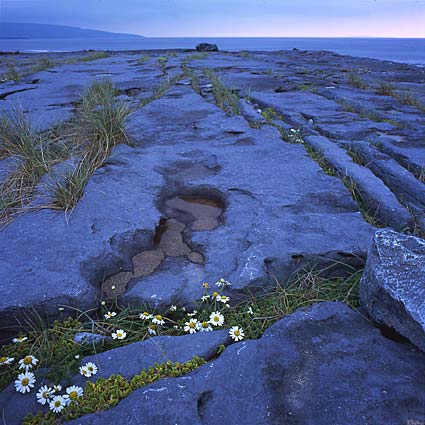

This article is the sequel of Square Scotland, in which I discuss composition with the 6x6 format.
Think landscape and wide-angle lenses come to mind. And not just a wide-angle: the wider the better. 28mm in 35mm format or 50mm for medium format is thought of as not wide enough for real landscape work.
Is this correct? Does landscape need such wide lenses? And what can one do with a telephoto lens?
In this article I discuss the use of different focal lengths in landscape photography. It certainly is not about 24mm vs. 28mm or do I need a 200 2.8. It is about wide-angle and telephoto and their relative merits.
By the way: just use the gear you already own and only start thinking about new stuff if the older gear really gets in the way of your work and vision.
I also make some additions on my last article on composition. There I discussed 'route composition' - here I talk about area composition and rhythm composition.
Most landscapes mainly stretch into a certain width. This is most obvious at sea or in the Dutch polders, but mountain scenery and vistas are wide as well.
A wide-angle lens helps to catch that width. A large section of the horizon is shown in the photograph and a large part of the foreground is included as well.
That foreground can look a bit exagerated by the wide-angle perspective, even to the point that you feel like like falling forward, because even the ground just in front of the photographer's feet are in the image. The relation between near and far are stretched and distorted. Used consciously this effect gives an enormous depth to the photograph.
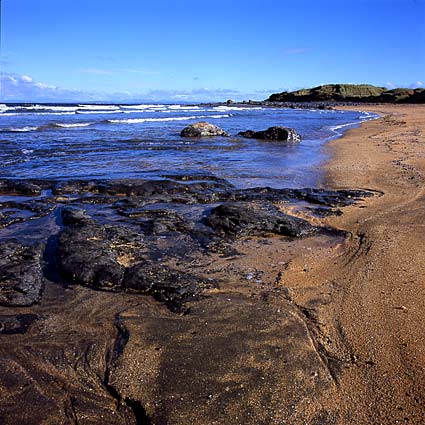
But does such a wide-angle shot of that beautiful wide scene always deliver a stunning photograph? Does the photograph breath the same space as that super vista?
A Dutch author on photography, Dick Boer, often called the wide-angle lens 'a greedy lens'. It includes a lot in the photograph and it is the photographer's troublesome task to find such a point of view and composition, that only significant parts get into the picture.
All too often the foreground is not that interesting or distance details, making the landscape a fascinating place, are hardly visible.
A less successful wide-angle image:
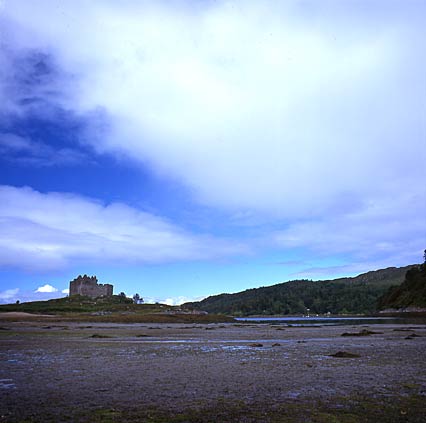
The wide-angle is used at its best, if the foreground is included prominently in the composition. I myself like to put a typical element of the landscape, like a piece of rock or a flowering heather shrub, on a marked place within the image. The horizon is placed high in these cases.
An impressive sky, vaulting all over the landscape, often needs a wide-angle as well. The horizon can be quite low in this case - the sky is the real subject.
The telephoto lens has the reversed characteristics: all elements of the landscape are pushed against each other so to speak - the image suggests distance rather than width. The perspective is compressed.
This effect can be used for mountains, islands, avenues etc. It suggests that one summit is very close to the next one or that an avenue is fully packed with trees.
Because the telephoto lens brings the distance nearer, the atmospheric perspective is far more obvious than in a wide-angle photograph. All kinds of dust and vapour in the air render the distance more vague. Especially fog and haze transform a landscape into a children's viewing box, where each next 'cut out layer' is painted in more dimmed hues.
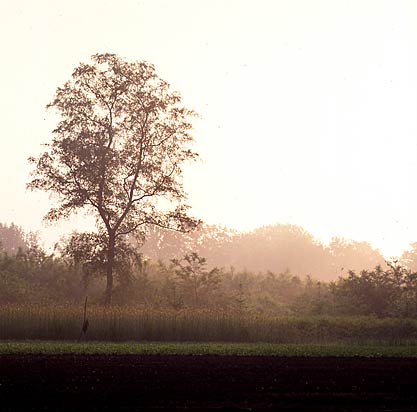
This atmospheric perspective makes the telephoto shot look monochromatic. The various elements of the landscape no longer show their own colour, but take on the colour of the available light. Depending on time and weather the entire picture can look yellow, purple, blue or whatever.
Because of this the telephoto lens is very good in rendering the atmosphere of a certain time of the day. And as the foreground is not included, the number of image elements can be limited. Appropriate use of this feature stresses the atmosphere.
In other words: telephoto shots tend to be more intimate. One looks as it were through a window and sees less elements.
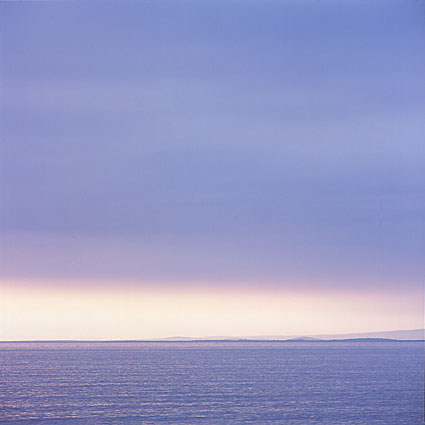
Another difference between wide-angle and telephoto is in depth-of-field. The telephoto lens has a more limited depth-of-field, although a small aperture and more distance to the subject help to make an image sharp from front to back.
But that limited depth-of-field can be used to your advantage as well. Not only for portraits or macro, but for landscape as well! To me landscape is not only the large scenes and panoramas. I like to include 'portraits' of the main characters of a certain landscape as well: trees, rocks, flowers.
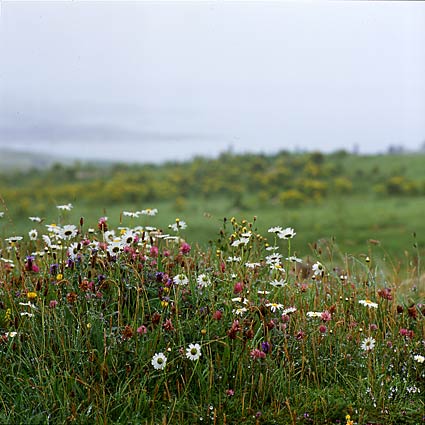
And yes, a telephoto can be necessary as soon as you can't get close enough to the subject. The real wildlife geek carries all those heavy lenses for a reason - not because of that fabulous shot of the branch where a moment ago that stunning little bird still was singing!
I am in no way a wildlife specialist myself - but I like taking photographs of a seal now and then:
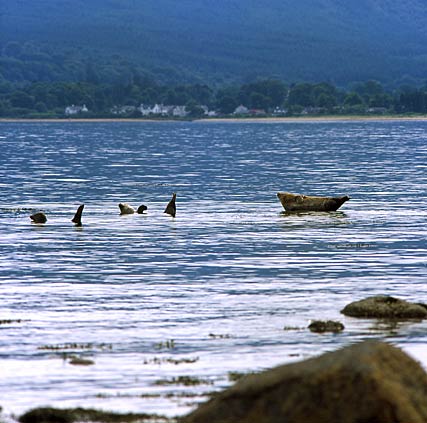
As you may have noticed, I didn't discuss the standard lens here. For sure, that is not because I never use it! It can be the perfect lens for a given situation: neither too wide nor too compressed. Especially trees and houses, who seem to fall down backwards with a wide-angle and where a telephoto doesn't allow a free view, can be shot with these lens.
And my good old Rolleicord, which I like to take with me when a bag full of gear is a bit too much, only has an 80mm lens - and it can conquer almost every subject!
In the Square Scotland article, I wrote how to build a composition around one or a few strong points, where the eye of the viewer follows a 'route' to the strongest point.
But not all compositions can be described by such 'route compositions'. Some images are visually strong because of the way areas within the image are divided, without forming a route for the eyes.
The image as a whole is more like a kind of flag or map: it is made of areas that balance each other. As an example: I try to keep bright areas small, because they attract more attention than darker areas.
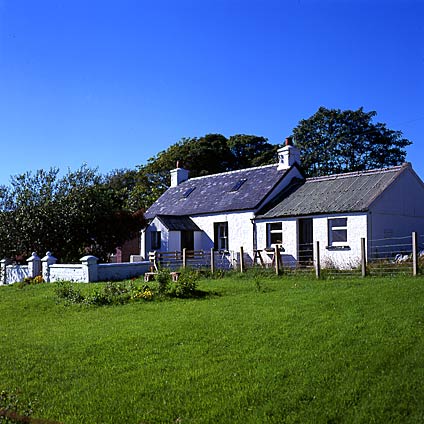
These kind of images are often made by a telephoto. Because most of the time the foreground is not included, the number of elements is restricted. And the fewer areas a composition has, the stronger the whole of the image.
Sometimes it isn't so much areas making a composition, but a certain rhythm of linear elements. This can coincide with a strong feeling of depth, like in a avenue of trees, or a total lack of depth, like in a frontal shot of a fence or a row of trees.
And again the telephoto has its use. Because it compresses perspective, the various elements are nearer to each other and the rhythm is made stronger. An impressive tree avenue can be shot with a telephoto rather than a wide-angle, because a wide-angle breaks the nearest trees out of the line.
Like the shot below shows, the telephoto also offers the possibility to isolate a detail out of a larger scene. This way the rhythm can make up for the entire composition.
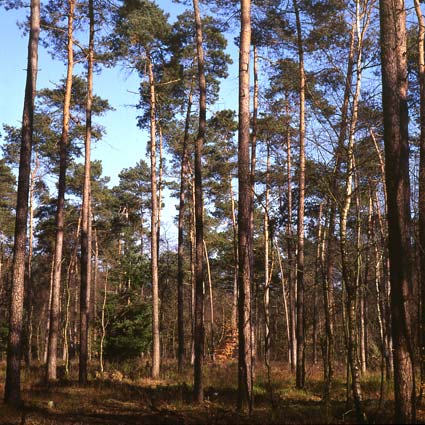
This composition has no depth; the eyes don't follow a route. But because of the rhythm the image is attractive in its own right!
This article is written by Wim van Velzen, © 2003.
Comments on the article and photographs are welcome!The landscape photographs shown here and lots more are put in several portfolios!
It is also possible to order landscape prints or to use them editorially or commercially.